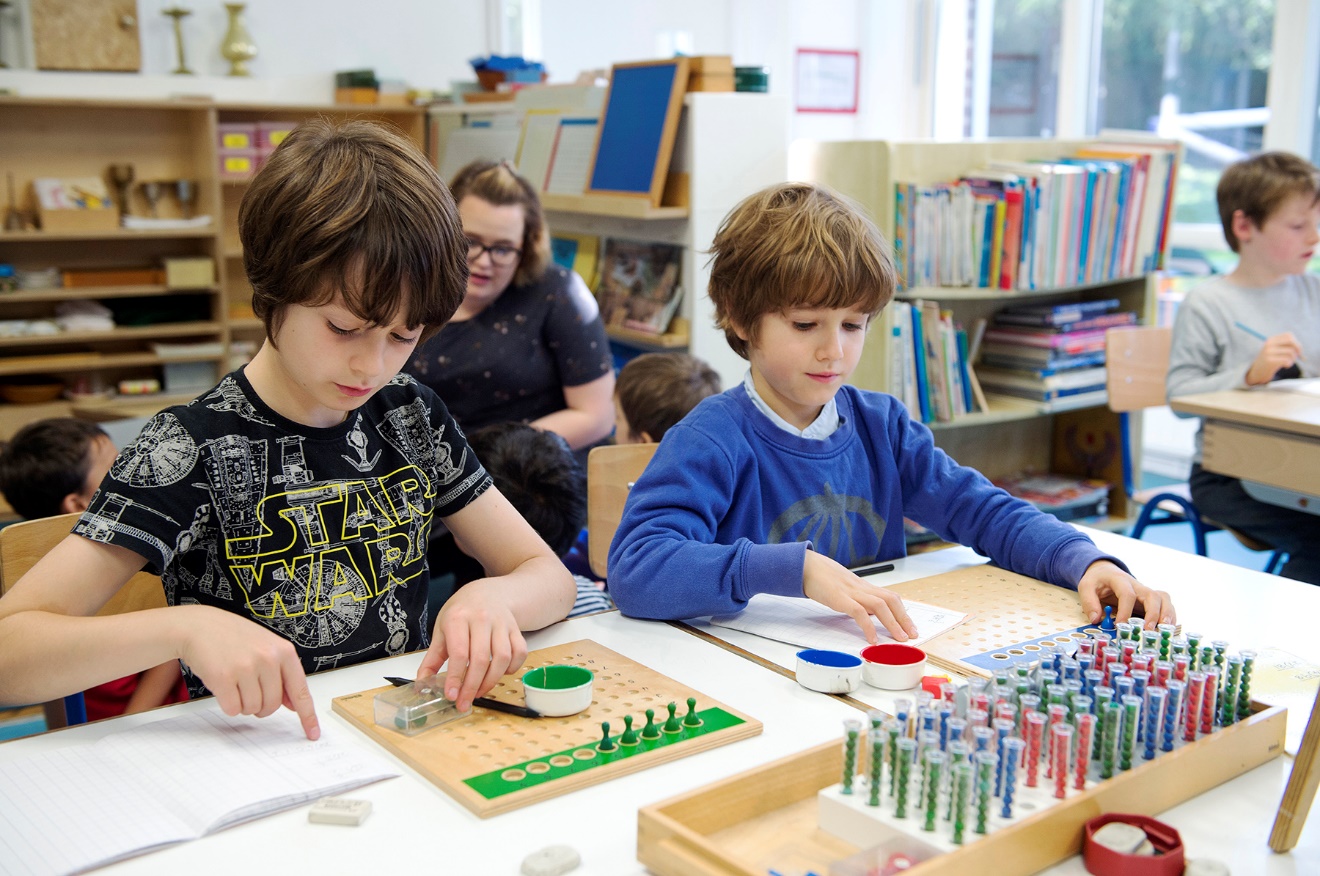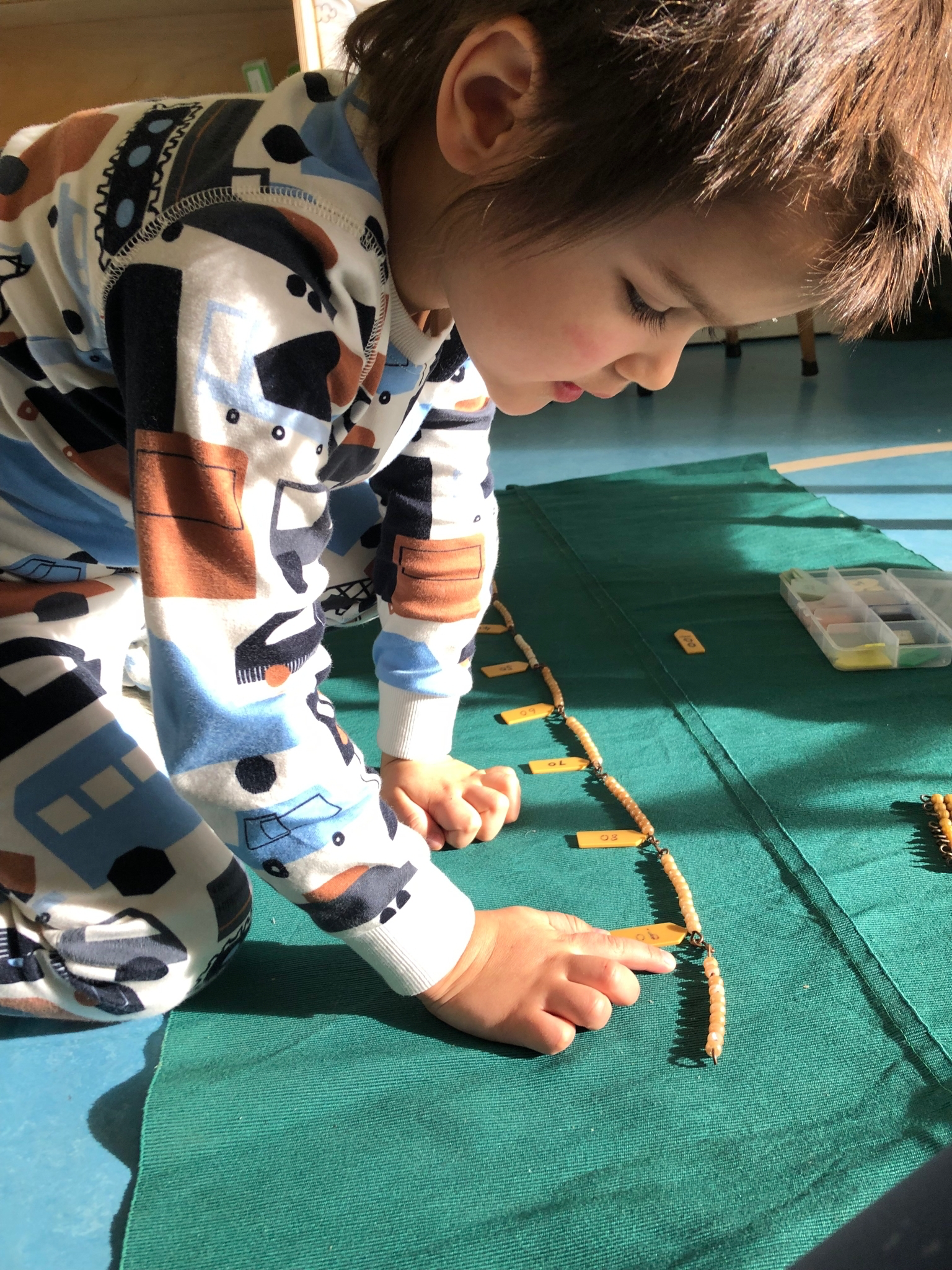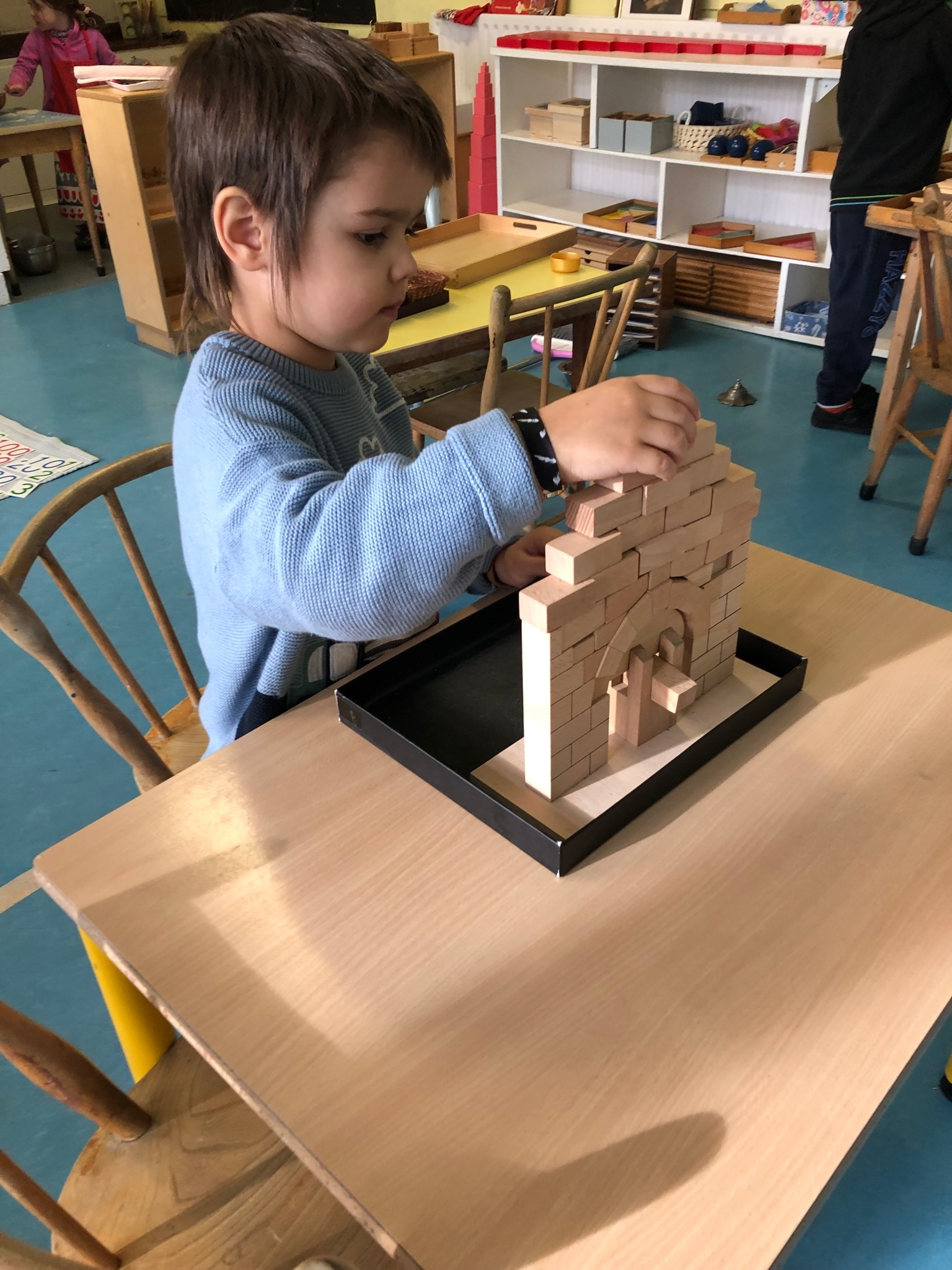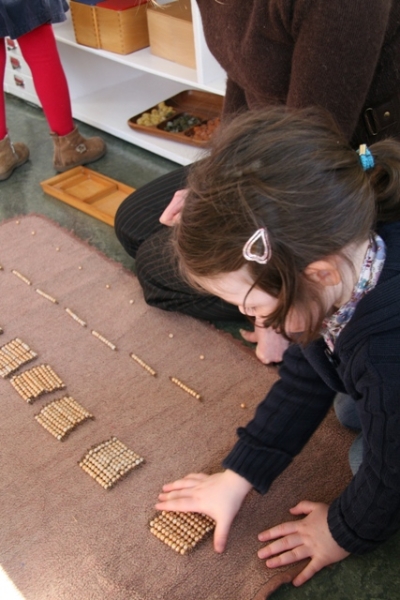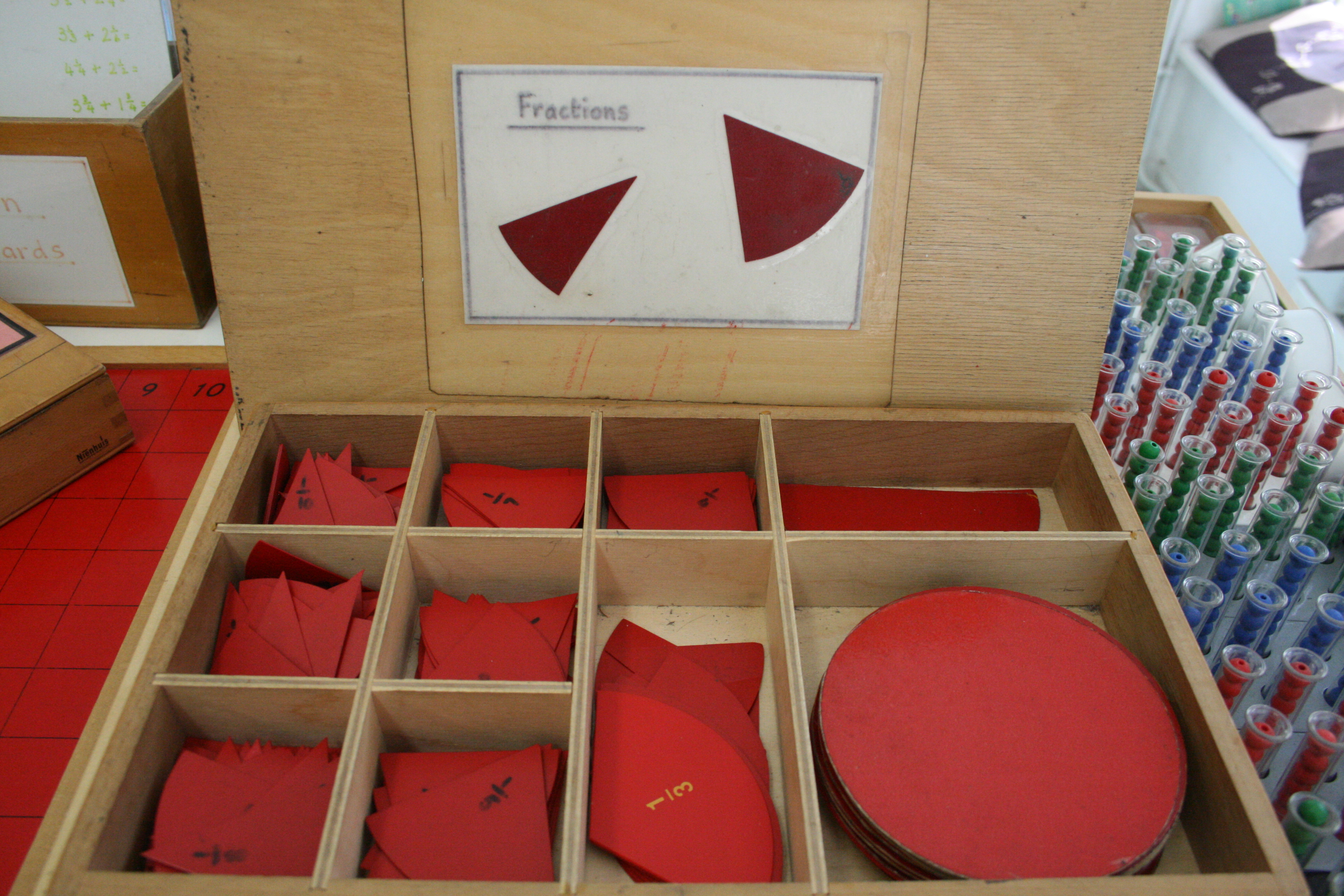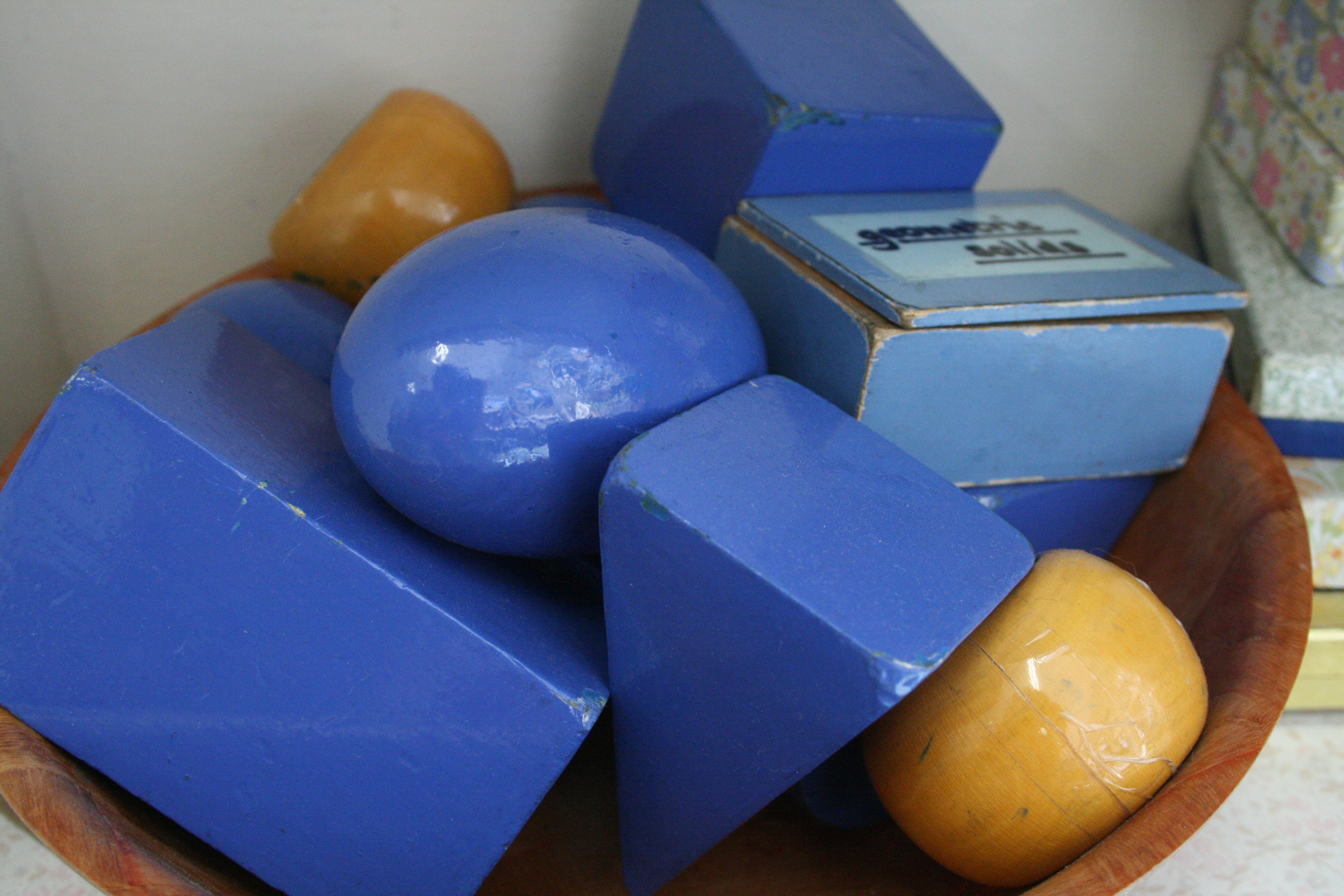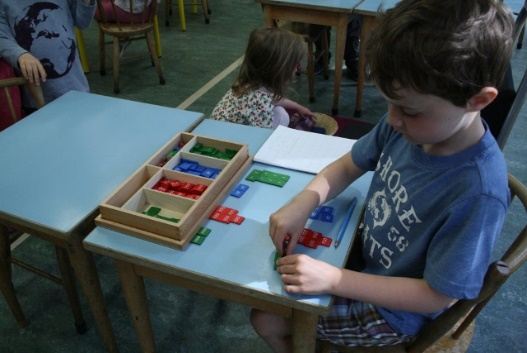Montessori Maths
Why Montessori Maths Works
The children learn through the development of the Mathematical mind, including arithmetic, geometry and algebra. The Montessori approach to arithmetic lays a perfect foundation for complete comprehension that number is quantity and size. We have materials that reinforce this idea. All aspects of number are presented in concrete form first before any abstract concepts are introduced. This is done from the 3-6 Class to the 9-12 Class.
‘Mathematics are necessary because intelligence today is no longer natural but mathematical, and without development and education in mathematics it is impossible to understand or take part in the special forms of progress characteristic of our times’ (Maria Montessori).
The Montessori Mathematics Curriculum Aims To Develop:
- A basic knowledge and competence in mathematical skills, concepts and language.
- Confidence and accuracy in practical and environmental mathematics situations.
- A positive attitude towards mathematics.
It also guides the child into the discovery of new concepts in number, measurement and space and the consolidation of more familiar ones through the use of Montessori designed concrete material.
Through this material the child has opportunities for repetition to reinforce the concepts, as we believe the child must reach abstractions him/herself through activities in the concrete form. Read on…
Working Towards the Abstraction Of Mathematical Concepts
In order for the child to reach a mathematical abstraction he/she needs to have a prepared foundation. Subconscious experience with order and sequence as well as sensorial exploration (in the 3-6 class) are preparatory steps necessary for that foundation.
This is done as follows:
Pre-Primary Class - 3-6 years old Mostly concrete material with language attached after exploration.
Primary Class - 6-12 years old Repetition, abstraction and application, linking to other curriculum areas.
Our resources are specially prepared didactic materials, encompassing games, charts, investigatory exercises and including the use of calculators.
Our goal is for each student to be given the opportunity to achieve excellence in mathematical knowledge and skills to the best of his/her ability.
The Development Of Mathematics
From the moment of birth, the child finds himself in a world of language, which he absorbs until it becomes a part of him/herself. This is not the case with mathematics. Many children encounter difficulties because the introduction of mathematical terms and concepts are postponed until they become difficult for them. Adults try to give in a short time and in an abstract way, the experience that humankind has acquired through the centuries.
The origins of mathematics arose from the needs of man. It was only after man had used maths as a tool for unknown ages that he/she gave rules to mathematics. Thus the abstraction of rules came only after the practical application of the operations. Today, however, too often we start mathematics in the school with a study of the rules. The child needs the concrete before the abstract, just as mankind did before him/her.
Five hundred years ago there was comparatively little to learn: today the collective knowledge of humankind is immense.
Throughout history humankind has learned by:
- Experience - Followed by
- Comprehension - After which he formulated
- Rules/Laws
The rule or law, must be the point of arrival and not the point of departure. If you begin with the rule, the child then closes his mind and learns only by memory. First give the child experiences with concrete materials then mathematics becomes a joy. As Maria Montessori says, ‘By nature man is endowed with a mathematical mind’ Children learn best through practical experience with concrete materials from which they derive comprehension.
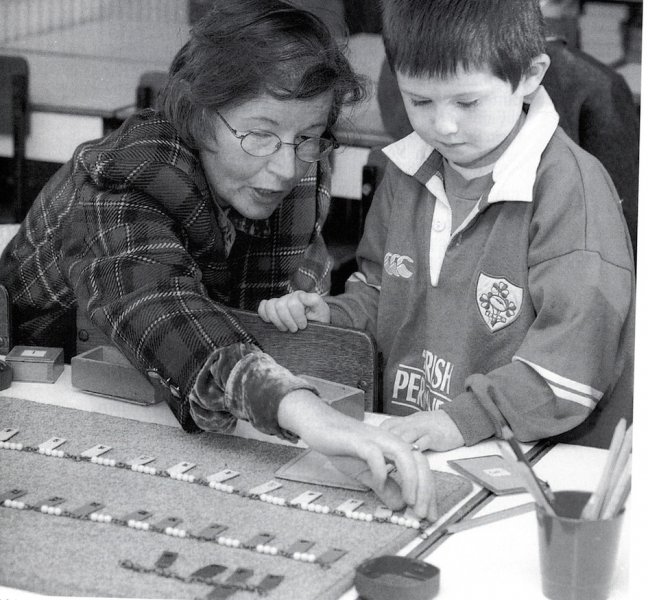
From comprehension, abstract rules may be intuited and generalised.
The liberty of the Montessori school consists in the fact that each child is able to repeat these learning experiences as often as they need in order to arrive at this comprehension. The child through his/her own efforts arrives at the internalisation of abstract concepts through his/her own involvement with concrete manipulative materials. This process is in contrast to the traditional method in which the teacher drills the child in the memorisation of facts and concepts.
The Montessori materials for mathematics provide a concrete representation of abstraction allowing the child to develop a clear inner image of concepts in mathematics. The concrete materials help the child develop an inner picture of mathematics that will last a lifetime.
The foundation laid in the Junior Cycle (3-6) years is the first stage of a spiraling process that takes many years to mature. Our goal at The Children’s House is to help our children form a clear understanding, beginning with very concrete materials and moving in carefully planned steps to greater levels of abstraction. They must work with these materials repeating and reviewing them continually until the knowledge becomes second nature and is absorbed into their unconscious mind. The end result is the ‘passage into abstraction’ at which time the child can routinely solve problems with pencil and paper.
The Montessori method challenges children to apply their knowledge to real life tasks. These can range from graphing the daily temperature and computing the average for each month to adjusting the quantities called for in a recipe for a larger number of people. Just as the origins of mathematics grew out of man’s need to calculate, so Geometry was an outgrowth of man’s need to measure and to build.
When the Egyptians built the pyramids with the aid of simple knotted rope in the proportions of the scalene right-angled triangle, they laid the foundations for the study of geometry. Only later, in Greece, were the laws and theorems deduced that made it a science. The child must follow the same sequence: first must come the practical experience as in Egypt, followed by abstraction, as carried out in Greece.
From the moment the child enters the Montessori environment, he finds him/herself surrounded by a world of geometric beauty and proportion. The sensorial materials at his/her disposal are rich and varied, offering concrete experiences and clear impressions. These sensorial materials are the tools that aid in the development of the child’s visual sense in the discrimination of form, proportioned as they are on metric measurement. Dr. Montessori also used the word ‘stereognostic’ taken form the Greek and translated literally as ‘knowledge in three dimension’, to describe the child’s muscular memory of 3D shapes.
Building upon this strong foundation the child is then given the language of Geometry. Because the child is still in the sensitive period of language he readily learns the names connected with the objects and shapes of which he has gained such concrete impressions. At Senior Class (6-12 years old) level the language of geometry is further developed through extensive work with the classified nomenclature. This not only enriches the child’s vocabulary of geometry but gives clear insight into geometric properties.
Through the analytical study of geometry the child arrives at abstraction. Due to the series of natural and logical steps with the concrete experience the child is able to arrive at the creative work of abstraction at a far earlier age than is generally thought possible for this study.
The great interest the children show for the study of geometry in Montessori schools stems from the many early experiences that have stimulated their curiosity and their thirst for knowledge of how and why mankind developed geometry.
It is wonderful to witness children at such an early stage of development learning with such ease and delight. The understanding they learn will stay with them forever.

